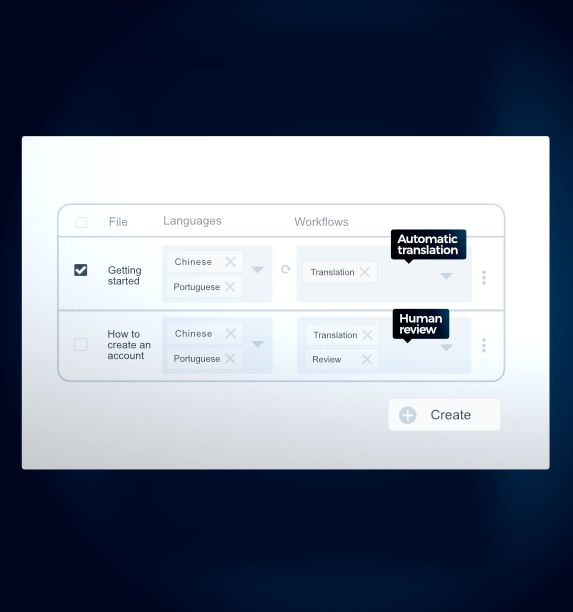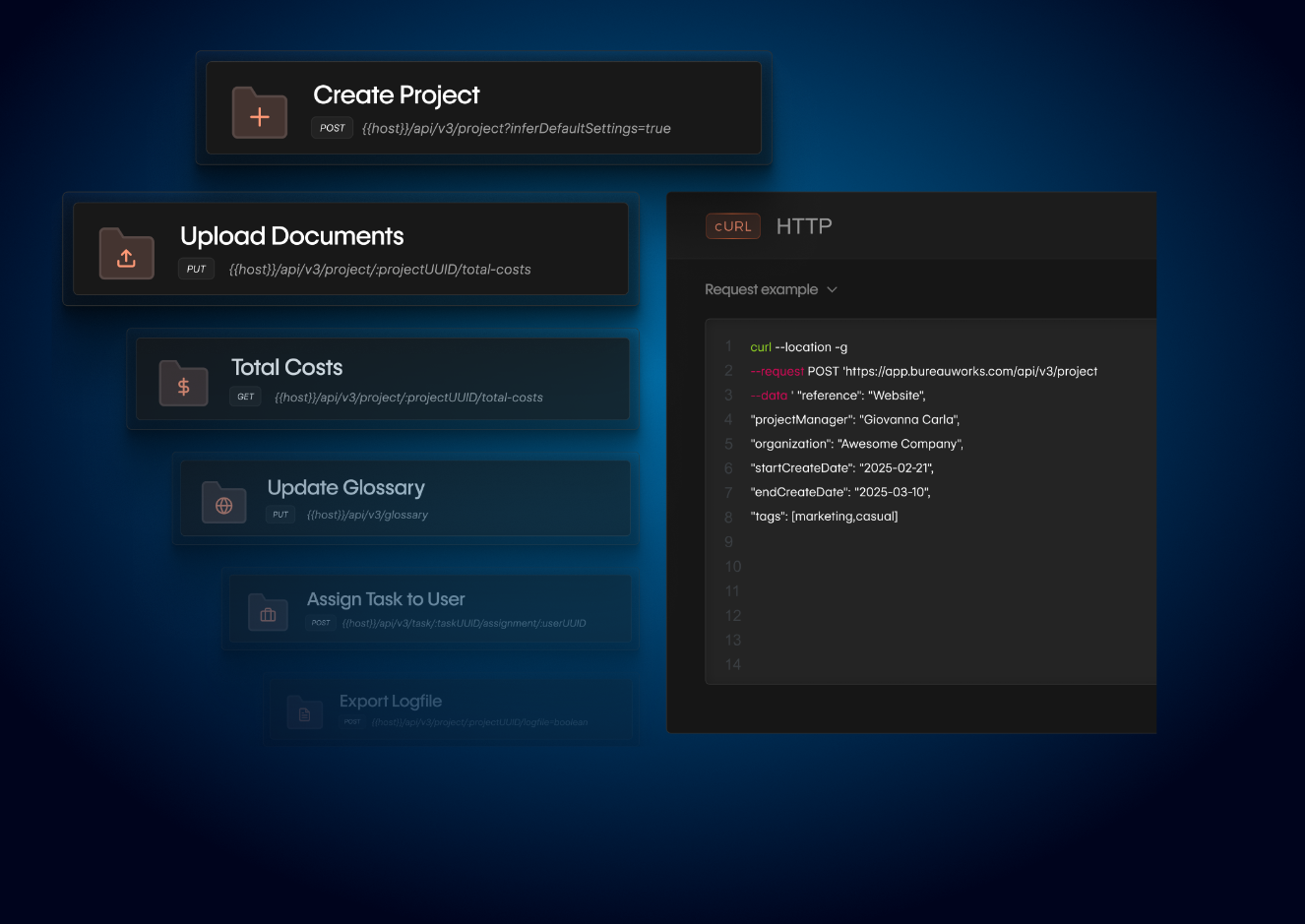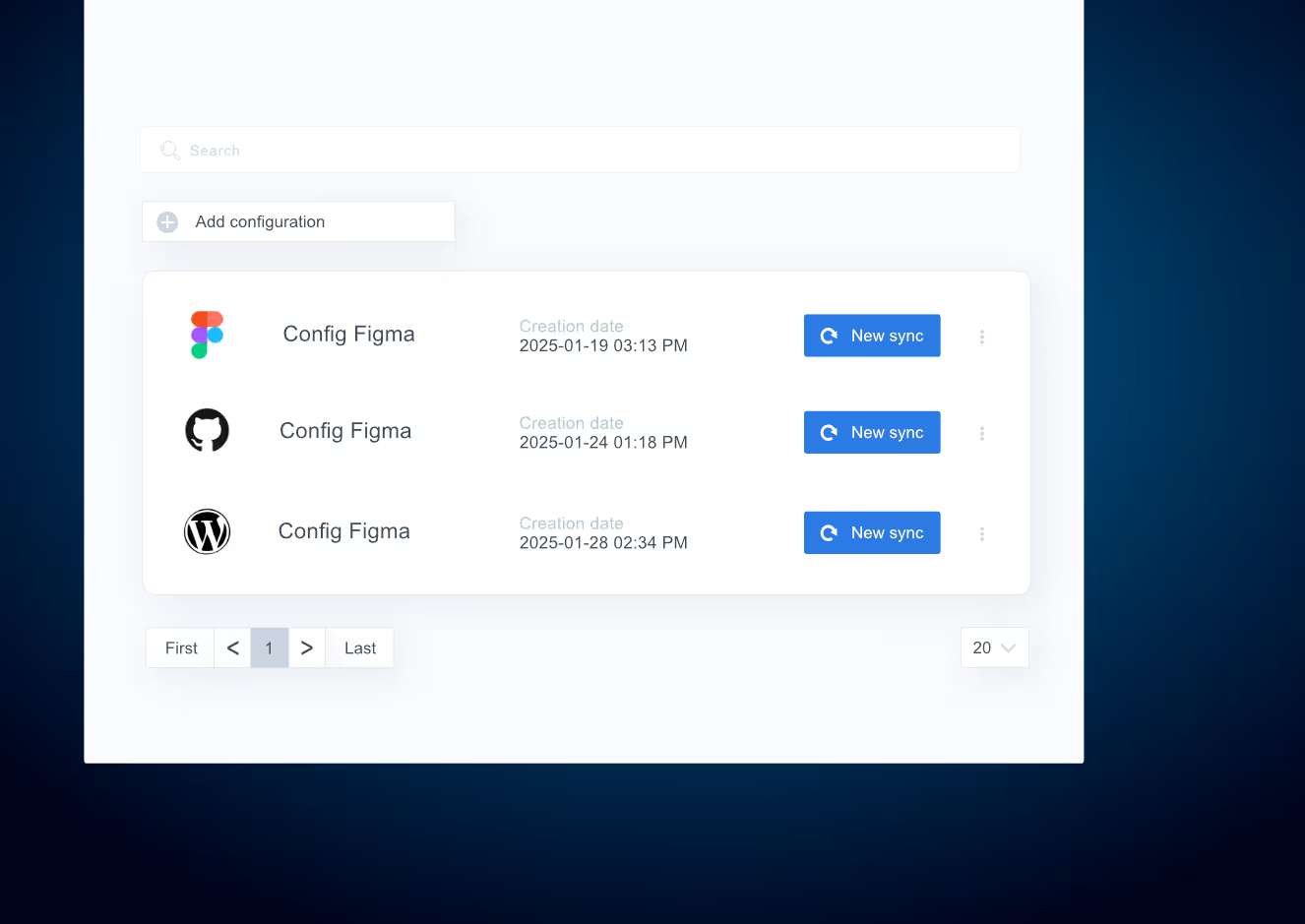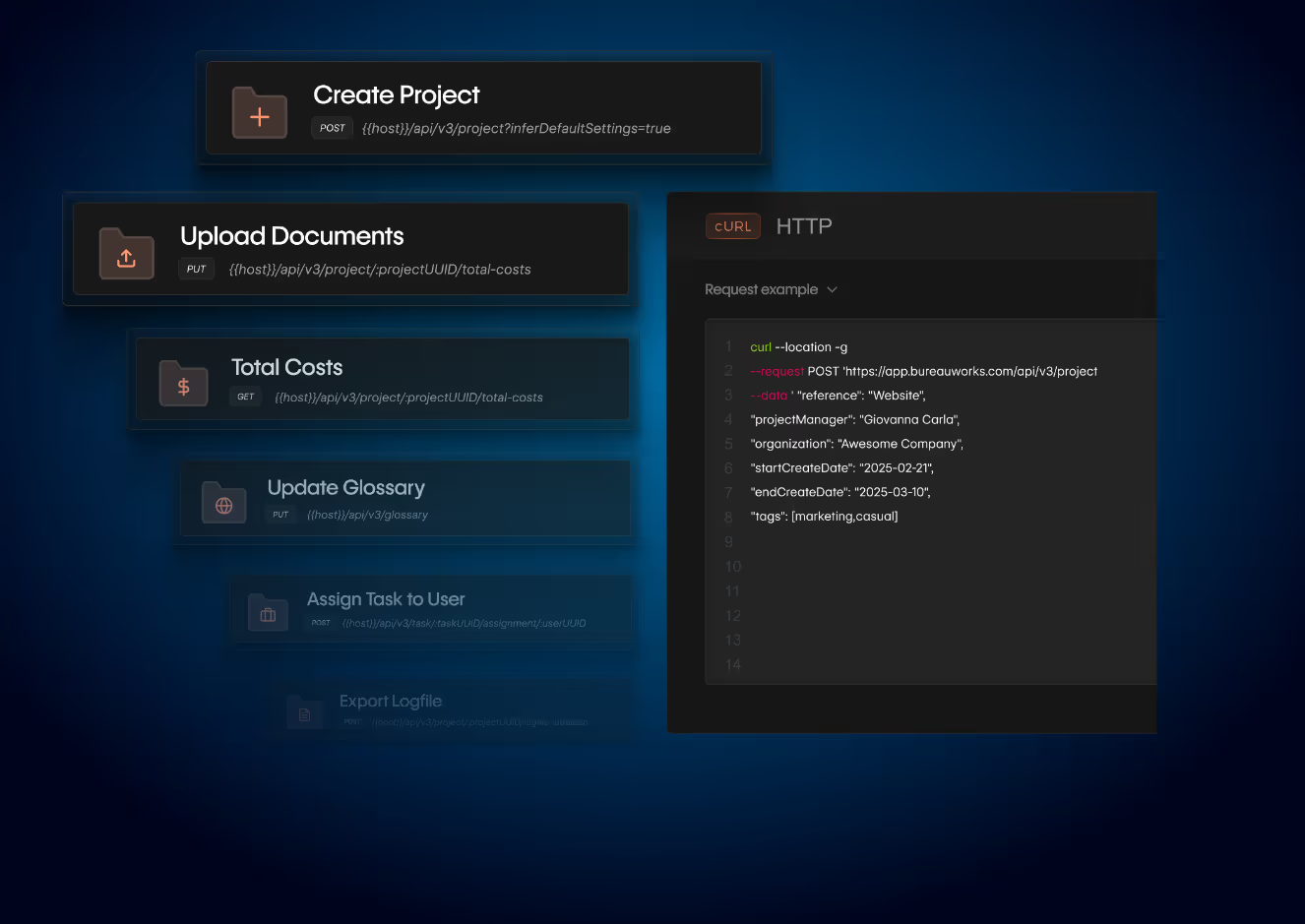App Localization Your App, Ready For Every Market
While most tools do part of the job, Bureau Works does it all. From automatic translations pulled from your codebase to tools that simplify translator reviews and payments, all in one place.




























The All-in-One App Localization Platform
Most localization tools just move strings from one place to another. But making your app truly global requires more: professional review, terminology checks, payments, and content sync across platforms.

Connect Easily to Your App
Integrate directly with your code repository, or design tools like Figma. Pull source strings in real time, localize, and send updates back without manual file handling.

Beyond Just Moving Strings
Yes, you can translate your app automatically, but what if you need to review, assign, or pay? Bureau Works runs the whole operation in one place.

More Than a Generic LLM
Unique with Context Sensitivity that applies your glossary and tone automatically to each translation, learns from your edits, and flags meaning shifts before they go live.
App Localization for Agile Teams
Bureau Works integrates into your dev workflow, detecting new strings, pushing translations, and updating apps without code freezes, while you control review, QA, and releases in one place.
.png)
.avif)

.avif)
Continuous App Localization Without Code Freezes
Bureau Works integrates directly with your repository, such as GitHub or a build pipeline, to automatically detect new strings, eliminating the need for manual exports and “string freeze.” Your app is always ready to ship in every language.
.png)
Translate Your Way
Create a fast, fully automated translation stream for everyday updates, or route critical content for professional review so nothing can be misunderstood.

Real-Time Localization Through Your CI/CD
Localize and update your app without breaking your release flow. With Bureau Works’ CLI, Connectors, and API, you can automate translation delivery straight from your codebase to production.

Run the Whole Operation
Pay translators, bill clients, track progress, and manage everything from one connected platform.
.avif)
Built for Developers, Not Just Translators

.avif)

Localization That Moves at Dev Speed
From commit to deployment, Bureau Works runs alongside your existing workflow, automating translations, catching errors early, and delivering context-perfect UI in every release.

Enterprise-Grade Security
Your code and translations stay protected with encryption, access controls, and secure infrastructure, built to meet enterprise compliance from commit to deployment

Trusted by Engineering Teams
From startups to global apps, dev teams rely on Bureau Works to integrate localization without breaking their build or slowing release cycles.

Automation-First Workflows
Integrate via API, CLI, or connectors to trigger translation jobs automatically on commit—no manual exports or “string freeze” required.

Context-Sensitivity
Our AI blends glossary terms, previous translations, and context from full strings, not just fragments, so your localized UI feels native.

Quality Gate Checks
Flag meaning shifts, placeholder mismatches, tag fixing, and off-brand tone before code is merged, catch issues before they hit production.

Built for AI, Not Retrofits
Built into the core, our AI delivers the speed and quality your app interface needs, handling translation, context, and consistency without slowing releases.

Future-Ready Localization
Scale to more languages without reworking your workflow, our integrations and infrastructure are built for ongoing updates.

SEO-Optimized Store Content
Automatically apply approved terms and style to app store listings and marketing copy, boosting ASO in every language.

Made for Collaboration
Keep developers, translators, PMs, and QA aligned in one system—every change tracked and synced to your repo.
Integrations
Connect your content to the tools your team uses every day - plus create your own micro-apps using no code integration






.png)
.png)
.png)
.png)
.png)
.png)

.avif)





.png)